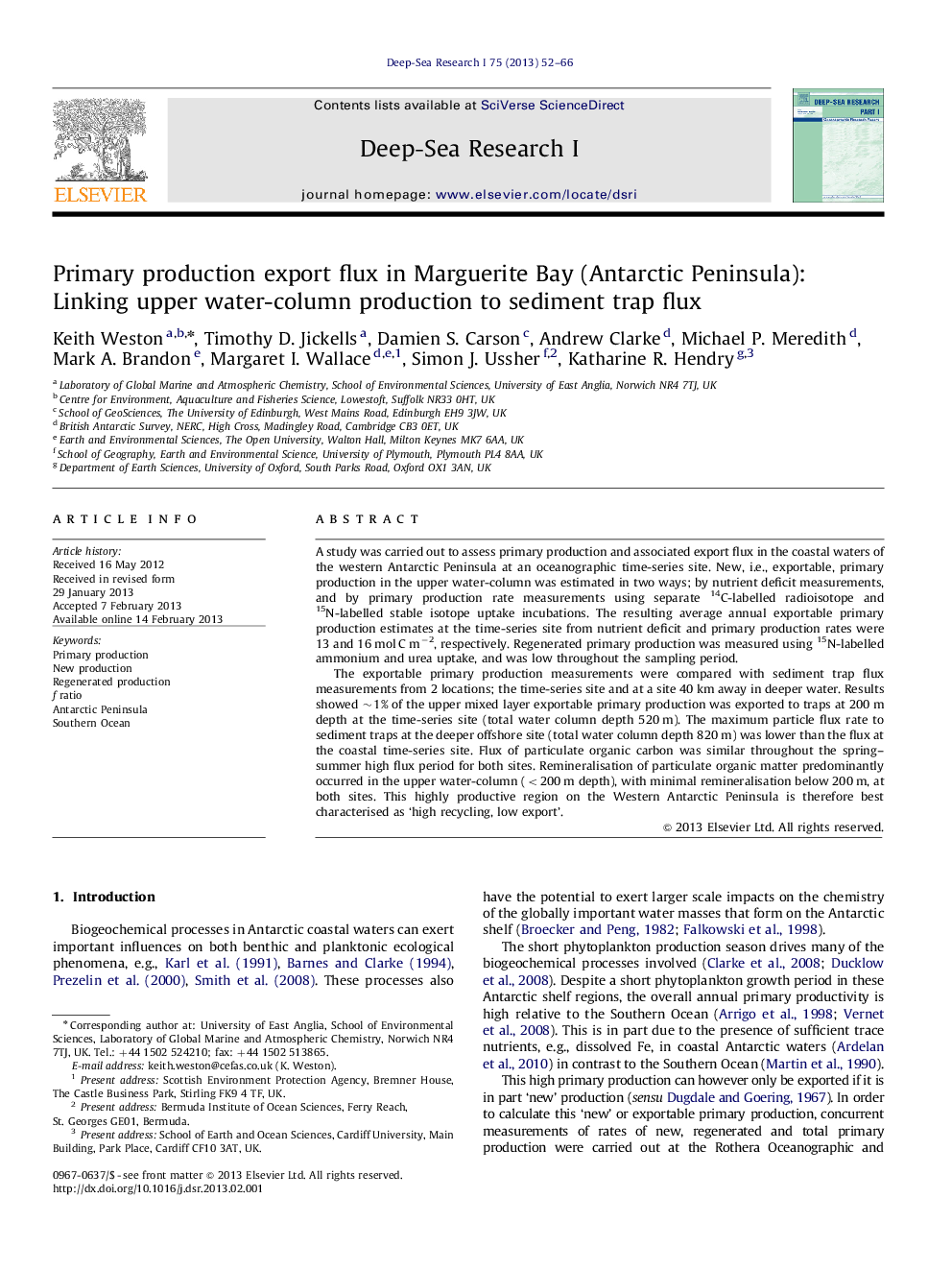| Article ID | Journal | Published Year | Pages | File Type |
|---|---|---|---|---|
| 4534618 | Deep Sea Research Part I: Oceanographic Research Papers | 2013 | 15 Pages |
A study was carried out to assess primary production and associated export flux in the coastal waters of the western Antarctic Peninsula at an oceanographic time-series site. New, i.e., exportable, primary production in the upper water-column was estimated in two ways; by nutrient deficit measurements, and by primary production rate measurements using separate 14C-labelled radioisotope and 15N-labelled stable isotope uptake incubations. The resulting average annual exportable primary production estimates at the time-series site from nutrient deficit and primary production rates were 13 and 16 mol C m−2, respectively. Regenerated primary production was measured using 15N-labelled ammonium and urea uptake, and was low throughout the sampling period.The exportable primary production measurements were compared with sediment trap flux measurements from 2 locations; the time-series site and at a site 40 km away in deeper water. Results showed ∼1% of the upper mixed layer exportable primary production was exported to traps at 200 m depth at the time-series site (total water column depth 520 m). The maximum particle flux rate to sediment traps at the deeper offshore site (total water column depth 820 m) was lower than the flux at the coastal time-series site. Flux of particulate organic carbon was similar throughout the spring–summer high flux period for both sites. Remineralisation of particulate organic matter predominantly occurred in the upper water-column (<200 m depth), with minimal remineralisation below 200 m, at both sites. This highly productive region on the Western Antarctic Peninsula is therefore best characterised as ‘high recycling, low export’.
► New ‘exportable’ primary production dominated throughout spring and summer. ► Particulate organic matter remineralisation mainly occurred above 200 m depth. ► ∼1% of new primary production exported to 200 m depth. ► Minimal particulate organic matter remineralisation occurred below 200 m depth. ► This is therefore a ‘high recycling, low export’ region.
